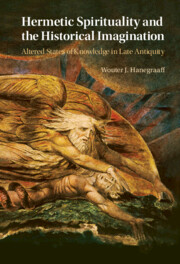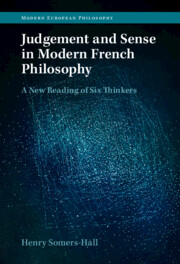43 results
Chapter 1 - ‘everybody eating everyone else’
-
- Book:
- Vegetarianism and Veganism in Literature from the Ancients to the Twenty-First Century
- Published online:
- 30 May 2024
- Print publication:
- 06 June 2024, pp 1-19
-
- Chapter
- Export citation
Chapter 10 - Behind the Structures and the Subject
-
- Book:
- Intellectual History and the Problem of Conceptual Change
- Published online:
- 02 May 2024
- Print publication:
- 09 May 2024, pp 210-227
-
- Chapter
- Export citation
Epilogue
-
- Book:
- V. S. Naipaul and World Literature
- Published online:
- 01 February 2024
- Print publication:
- 08 February 2024, pp 198-212
-
- Chapter
- Export citation
Chapter 2 - “The English Language Was Mine; The Tradition Was Not”
-
- Book:
- V. S. Naipaul and World Literature
- Published online:
- 01 February 2024
- Print publication:
- 08 February 2024, pp 30-57
-
- Chapter
- Export citation
6 - Rorty, Irony, and Neoliberalism
- from Part III - Irony’s Impact
-
-
- Book:
- The Cambridge Handbook of Irony and Thought
- Published online:
- 20 December 2023
- Print publication:
- 07 December 2023, pp 96-111
-
- Chapter
- Export citation
Introducing Derrida
-
- Article
- Export citation
2 - Naming God at Sinai The Gift of the Name
-
- Book:
- Naming God
- Published online:
- 30 June 2023
- Print publication:
- 20 July 2023, pp 9-39
-
- Chapter
- Export citation
The Anthropocene rupture in international relations: Future politics and international life
-
- Journal:
- Review of International Studies / Volume 49 / Issue 4 / October 2023
- Published online by Cambridge University Press:
- 27 October 2022, pp. 597-614
- Print publication:
- October 2023
-
- Article
-
- You have access
- Open access
- HTML
- Export citation
Introduction
-
- Book:
- Judgement and Sense in Modern French Philosophy
- Published online:
- 09 June 2022
- Print publication:
- 23 June 2022, pp 1-8
-
- Chapter
- Export citation
Chapter 5 - Derrida and Différance
-
- Book:
- Judgement and Sense in Modern French Philosophy
- Published online:
- 09 June 2022
- Print publication:
- 23 June 2022, pp 148-177
-
- Chapter
- Export citation

Hermetic Spirituality and the Historical Imagination
- Altered States of Knowledge in Late Antiquity
-
- Published online:
- 16 June 2022
- Print publication:
- 30 June 2022

Judgement and Sense in Modern French Philosophy
- A New Reading of Six Thinkers
-
- Published online:
- 09 June 2022
- Print publication:
- 23 June 2022
Chapter 10 - Pharmakon, Difference and the Arche-Digital
- from Part II - Development
-
-
- Book:
- Globalization and Literary Studies
- Published online:
- 01 April 2022
- Print publication:
- 21 April 2022, pp 159-177
-
- Chapter
- Export citation
Chapter One - The Politics of Archival Knowledge in International Courts
-
- Book:
- The Archival Politics of International Courts
- Published online:
- 13 August 2021
- Print publication:
- 26 August 2021, pp 1-29
-
- Chapter
- Export citation
Chapter 9 - Peregrinationes in Psalmos
- from Part II - Religion
-
-
- Book:
- Empire and Religion in the Roman World
- Published online:
- 26 August 2021
- Print publication:
- 19 August 2021, pp 212-231
-
- Chapter
- Export citation
Introduction
-
-
- Book:
- The Cambridge Companion to Gadamer
- Published online:
- 29 July 2021
- Print publication:
- 12 August 2021, pp 1-14
-
- Chapter
- Export citation
14 - The Constellation of Hermeneutics, Critical Theory, and Deconstruction
-
-
- Book:
- The Cambridge Companion to Gadamer
- Published online:
- 29 July 2021
- Print publication:
- 12 August 2021, pp 355-373
-
- Chapter
- Export citation
1 - Gadamer (1900–2002)
-
-
- Book:
- The Cambridge Companion to Gadamer
- Published online:
- 29 July 2021
- Print publication:
- 12 August 2021, pp 15-43
-
- Chapter
- Export citation
12 - Rorty: Reading Continental Philosophy
-
-
- Book:
- The Cambridge Companion to Rorty
- Published online:
- 13 April 2021
- Print publication:
- 01 April 2021, pp 261-283
-
- Chapter
- Export citation



